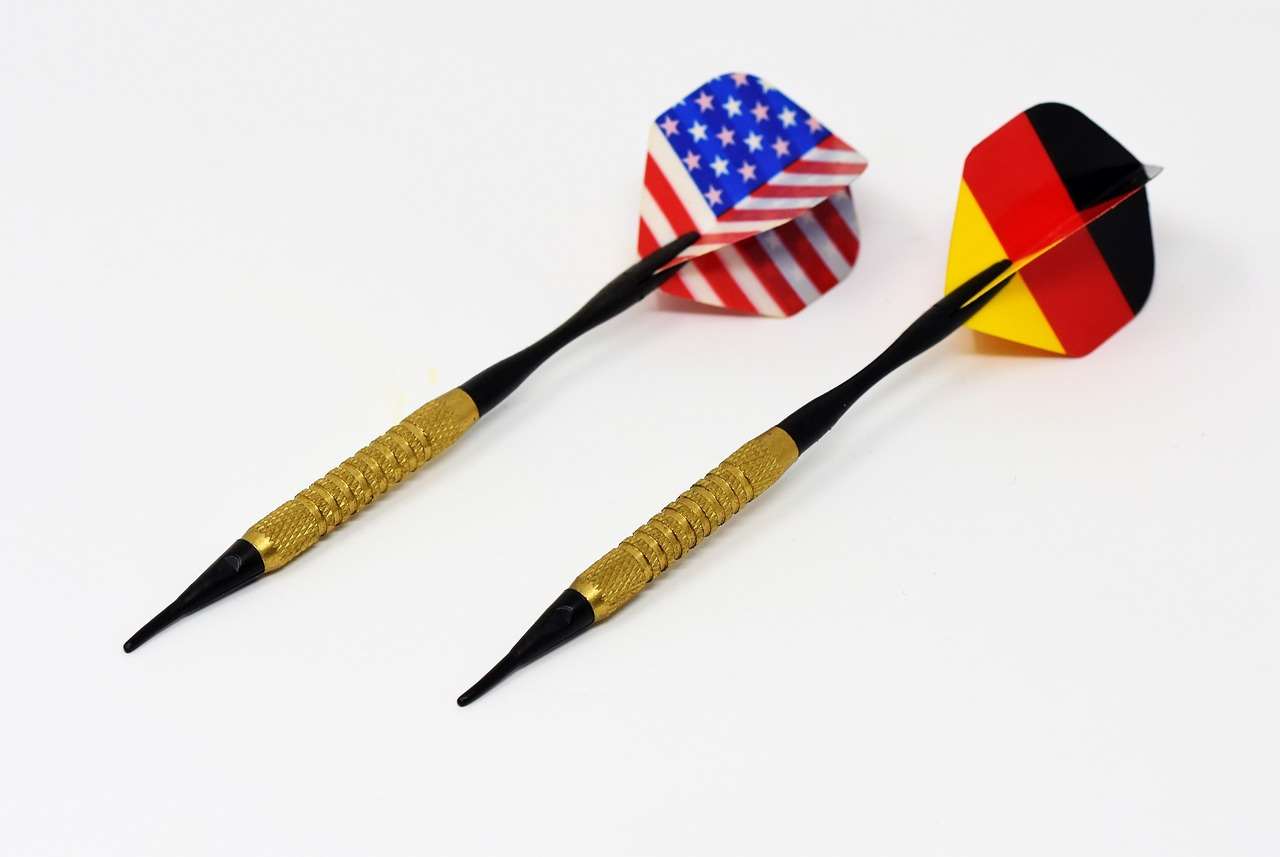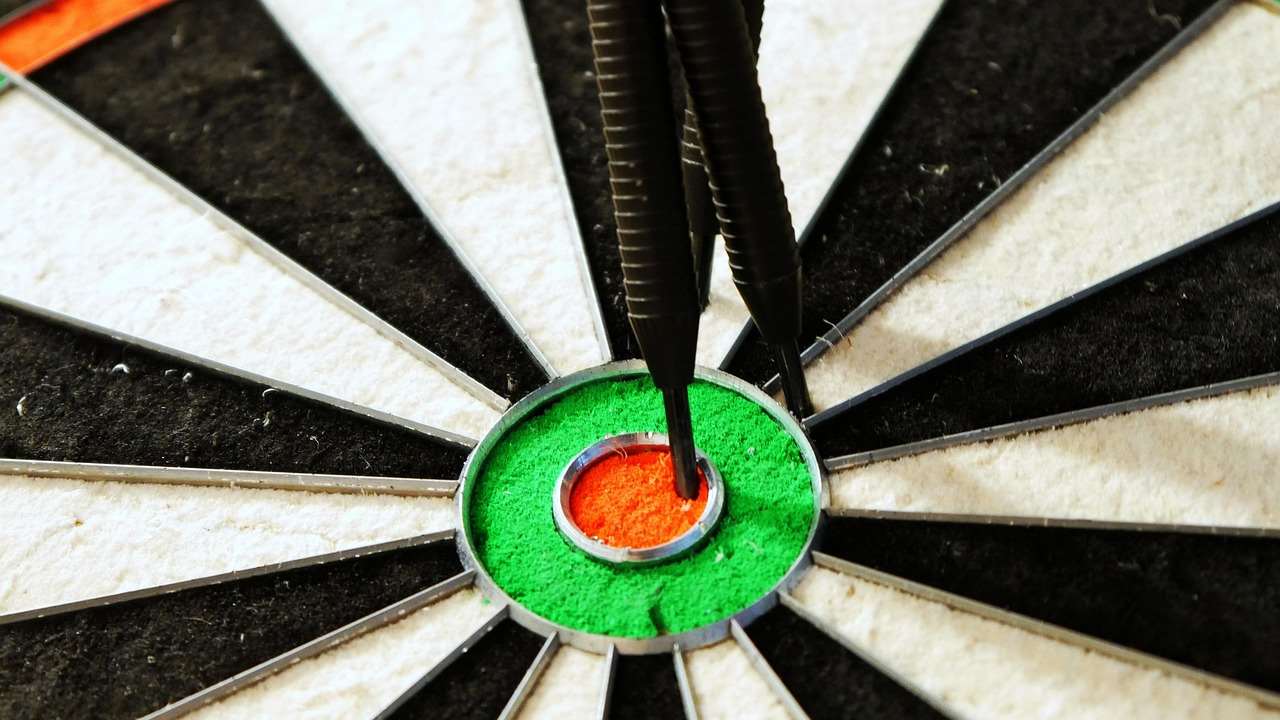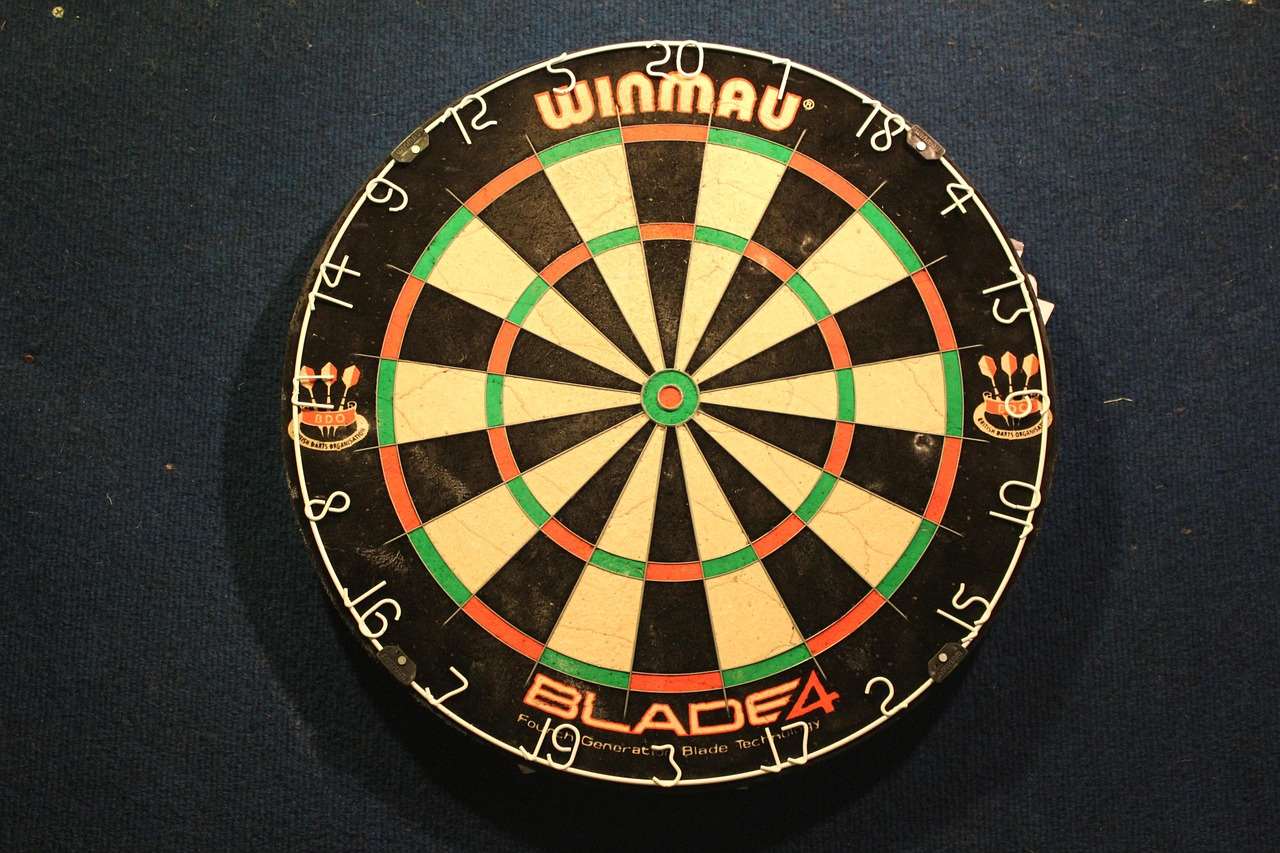Achieving consistent and accurate dart shaft spin is crucial for improving your dart game. This article will explain the factors influencing dart shaft spin, provide practical tips to improve your spin, and discuss how optimal spin contributes to better accuracy and consistency. We’ll also cover common mistakes to avoid.
⚠️ Still Using Pen & Paper (or a Chalkboard)?! ⚠️
Step into the future! The Dart Counter App handles all the scoring, suggests checkouts, and tracks your stats automatically. It's easier than you think!
Try the Smart Dart Counter App FREE!Ready for an upgrade? Click above!
The dart shaft spin, or the rotation of the dart around its axis during flight, significantly impacts its trajectory and accuracy. A well-spun dart will maintain a stable flight path, minimizing wobble and ensuring it lands closer to the intended target. This is why understanding and mastering dart shaft spin is so essential for any aspiring or experienced darts player. Proper dart shaft spin contributes to better grouping, higher scores and an overall more enjoyable game.
Understanding Dart Shaft Spin and its Impact on Accuracy
The amount and direction of dart shaft spin directly influence the dart’s flight. A dart with excessive spin might veer off course unpredictably, while a dart with insufficient spin may wobble significantly. Ideally, you want a consistent, controlled amount of spin that allows your dart to fly smoothly and accurately. The type of dart shaft spin you generate, whether left-to-right or right-to-left, often isn’t intentionally controlled but rather a result of your grip and release technique. The subtle movements of your wrist and fingers as you release the dart contribute heavily to dart shaft spin.

Factors Affecting Dart Shaft Spin
- Grip: Your grip is the most significant factor. A firm but relaxed grip, allowing for a natural release, is ideal. Too tight a grip can hinder your release and reduce dart shaft spin control, often resulting in erratic flight.
- Release Technique: A smooth, controlled release is crucial. Avoid jerking or snatching the dart. Instead, focus on a fluid motion, letting the dart naturally leave your hand. A smooth, controlled release helps significantly with dart shaft spin.
- Dart Weight and Shape: Heavier darts generally tend to be more stable in flight and less sensitive to variations in dart shaft spin. The shape of the dart and its aerodynamic design also play a role. Experiment with different dart shapes and materials to find one which suits your release.
- Throwing Motion: The full arc of your throw plays a role. Maintain a consistent, smooth throwing action. Inconsistent throwing motions can cause inconsistencies in your dart shaft spin and affect your dart’s trajectory significantly.
Improving Your Dart Shaft Spin: Practical Tips and Techniques
Improving your dart shaft spin isn’t about brute force; it’s about precision and control. Here are some practical tips to help you improve your accuracy and consistency:
Consider using a dartboard ring light to enhance your vision during practice sessions. Better visibility will help in evaluating the dart shaft spin and correcting any flaws.
Focus on Your Grip and Release
Practice different grips to find the one that allows you to comfortably and consistently release the dart. A common mistake is gripping the dart too tightly. Experiment, find a relaxed grip and concentrate on the natural release to optimize your dart shaft spin. Aim for a smooth, consistent release motion every time you throw. A best dart gun ever isn’t necessarily the best way to improve your technique; focus on perfecting the fundamentals instead.

Practice Consistent Throwing Motion
Consistency is key. Your dart shaft spin will vary drastically if you throw from various stances or with different motions. Develop a consistent, repeatable throwing motion, and stick to it. Regular practice is needed to master this and improve your dart shaft spin. Practicing your form in front of a mirror, and recording yourself, can help you identify any flaws in your technique. Find the optimal throwing distance by reading more about darts game distance from board to increase consistency.
Experiment with Different Darts
Different dart weights, shapes, and materials affect flight and dart shaft spin. Experiment to find a dart that suits your throwing style and produces a consistent spin. A proper setup is also important, so read more about dartboard for back of door to learn more about proper placement.
Analyze Your Throws
Observe your darts in flight. Do they wobble? Do they veer off course? Analyzing your throws will help you identify the causes of inconsistencies and improve your dart shaft spin. Consider using a Best darts scoring app to track your progress and identify areas for improvement. It also allows you to focus more on your technique rather than the scoring.
Common Mistakes to Avoid When Focusing on Dart Shaft Spin
Many common mistakes can affect your dart shaft spin and, consequently, your accuracy. Understanding and avoiding these mistakes is crucial for improvement.

- Gripping too tightly: A tense grip restricts the natural release, hindering consistent dart shaft spin.
- Inconsistent throwing motion: Variations in your throwing technique will create inconsistent dart shaft spin.
- Jerky release: A jerky release prevents a smooth, controlled spin, leading to inaccuracies.
- Incorrect posture: Poor posture can throw off your balance, affecting your throwing motion and dart shaft spin.
- Ignoring your follow-through: A proper follow-through is crucial for a consistent release and dart shaft spin. Neglecting this often results in unpredictable dart movement.
Advanced Techniques for Mastering Dart Shaft Spin
Once you’ve mastered the basics, you can explore advanced techniques to further refine your dart shaft spin and accuracy. These techniques require a deep understanding of your throwing style and the subtle nuances of dart flight.
Learn about the Shanghai darts term and its implications on improving your game. Using the right terminology can help you refine your technique, especially when discussing and analyzing your dart shaft spin with fellow players.

Fine-tuning Your Release
Focus on the subtle adjustments of your wrist and fingers during the release to control the dart shaft spin. This is where the real precision comes in and often requires hours of focused practice. Try varying the speed of the release to achieve different dart shaft spin rates and observe the results. You can also experiment with various methods of releasing the dart, such as using a different finger to release the dart or varying the force of your wrist motion.
Analyzing Flight Path and Adjustments
Use slow-motion video analysis of your throws to observe the subtle movements of your dart in flight. This will allow you to spot inconsistencies in your dart shaft spin and make necessary corrections. Identify how the dart’s orientation, wobbles, and flight angles are influenced by your release and overall throwing mechanics. Try to understand why this happens and adjust your technique accordingly.
Conclusion: Consistency is Key
Mastering dart shaft spin isn’t just about power; it’s about precision and consistency. By focusing on your grip, release, throwing motion, and analyzing your throws, you can significantly improve your accuracy and consistency. Remember to practice regularly, experiment with different darts, and avoid common mistakes. With dedication and practice, you’ll unlock a new level of skill and enjoyment in your dart game. Keep refining your technique, analyze your performance, and you’ll be well on your way to consistently hitting those bullseyes!
Start practicing today and experience the difference a well-controlled dart shaft spin makes in your game. Perhaps explore some of the related game strategies by searching for darts joyn and improving your overall game.

And remember, for a more organized approach and deeper understanding of your dart game, make sure to read about oche darts the strand and widdy dart board. Learning the essentials of your chosen dart board will aid you greatly in perfecting your throws. If you’re aiming for a more sophisticated understanding of your dart playing, don’t forget to also check out darts devil and why dartmouth essay examples (if you are keen to improve your writing skills).
Hi, I’m Dieter, and I created Dartcounter (Dartcounterapp.com). My motivation wasn’t being a darts expert – quite the opposite! When I first started playing, I loved the game but found keeping accurate scores and tracking stats difficult and distracting.
I figured I couldn’t be the only one struggling with this. So, I decided to build a solution: an easy-to-use application that everyone, no matter their experience level, could use to manage scoring effortlessly.
My goal for Dartcounter was simple: let the app handle the numbers – the scoring, the averages, the stats, even checkout suggestions – so players could focus purely on their throw and enjoying the game. It began as a way to solve my own beginner’s problem, and I’m thrilled it has grown into a helpful tool for the wider darts community.